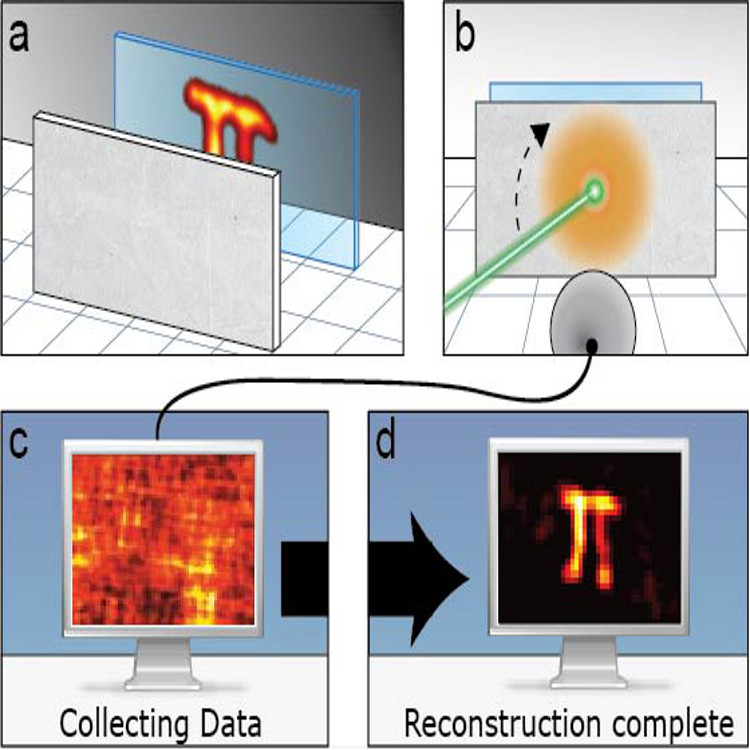-
Viewpoint on 'IONS'
Viewpoint on 'Scientific Literacy'
- Proudly sponsored by
-


Optics & Photonics Focus
Volume 19 Story 1 - 14/1/2013
Looking through an opaque material
In an experiment recently published in Nature, Allard Mosk and colleagues have succeeded in obtaining sharp pictures of objects hidden behind an opaque screen. (a) The test object used was the Greek letter ?, written in fluorescent ink. The test object was covered by a strongly scattering ground-glass diffuser that completely hid it from view. (b) A laser beam was then scanned at an angle, always hitting the diffuser in the same spot. The test object only yielded a diffuse glow of fluorescent light. (c) The intensity of this fluorescence versus the angle of the laser beam were measured and recorded by a computer. The seemingly random pattern bears no resemblance to the test objects. (d) The computer then searched for similarities in the measured pattern, which were used to calculate the true shape of the test object.
[read full story]
